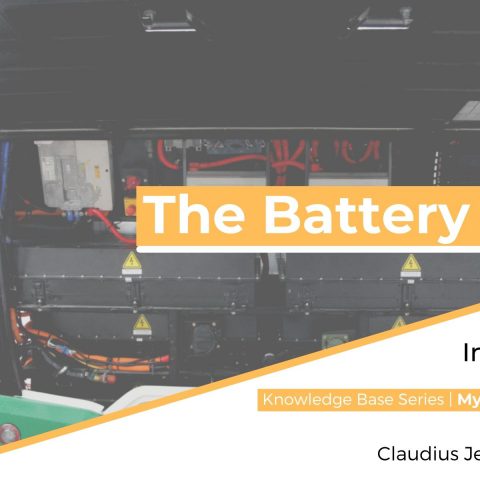The Battery Cycle: shedding light on batteries through a series of knowledge articles
Below, a contribution from Claudius Jehle, CEO of volytica diagnostics GmbH*. It’s the first of a series of knowledge articles (a cycle, indeed) on a series of topics around Li-Ion Batteries, written by Claudius and other field-related experts. Feedbacks, questions and contributions are welcome (at info@sustainable-bus.com) The battery is the last relevant remaining wearing part […]

Below, a contribution from
Claudius Jehle, CEO of volytica diagnostics GmbH*.
It’s the first of a series of knowledge articles (a cycle, indeed)
on a series of topics around Li-Ion Batteries,
written by Claudius and other field-related experts.
Feedbacks, questions and contributions are welcome (at info@sustainable-bus.com)
The battery is the last relevant remaining wearing part of an electric vehicle – and by far the most expensive. Apart from tyres and wipers, there’s no oil change, no complex exhaust system and even braking is largely done by the engine itself, sparing the mechanical brakes.
Together with modest electricity prices, battery-electric transport should thus in principle be a care-free, straightforward and especially economical alternative to our well-known ICE vehicles.
However, in practice there are several challenges, sometimes bad media coverage and especially a huge information asymmetry around this complex component onto which we put so much focus and hope.
Reason enough to take a closer look and debunk some myths of this delicate blackbox.

Debunking myths on batteries
In the following months, a group of industry experts will present various topics related to batteries, their use and crucial information around their daily application. The series will be a walk through a very broad range of aspects, starting with technological trends regarding chemistry: Li-Ion is not Li-Ion – there is NMC, NCA, LFP, LTO and there is “solid state” on the horizon, all with their individual pros & cons and trends.
In the ensuing articles, we will touch upon the seemingly trivial topic of State-of-Charge determination (SOC) – and why it is not trivial and has high impact on daily application -, on charging philosophies and impact on daily operation, and on one of the most underestimated peculiarities of Li Ion battery systems: Inhomogeneity and balancing.
A series of articles on battery technology
With these lessons learned, we can dive into degradation. Stress Factors – what hurts? – State-of-Health “SOH”, safety and application-centered End-of-Life criteria will be addressed in various articles in the following. Based on that, we will cover practical tips for lifetime optimization measures and aspects of residual value/after-use concepts and recycling – especially why such concepts have not yet won through and what needs to change.
The aim is to present these complex topics to the audience in a practical, non-academic way with real life examples, giving a comprehensible and straightforward summary at the end of each text. We encourage you to contribute, send your questions or feedback, so that we can work them into the series.
—
* Based on more than 10 years of experience with real life battery applications, Claudius and his team are making battery diagnostics a commodity by developing Easy battery diagnostics software for the analysis of battery field data.







